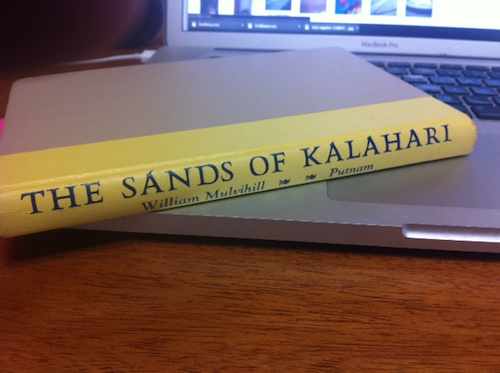I picked up Sands of Kalahari at a thrift store, with a set of other books chosen merely because they looked “old” and I wanted a classic looking row on my shelf. For some reason I started thumbing through it, and fell right into an engrossing story.
At a surface level, it looks like most any other hollywood plane crash in the desert movie, a cast of disparate characters thrown together in a survival setting, the deserts of south west Africa. The reader is drawn into the characters slowly, but the unfold and take vivid shape. But the story bobs and weaves, and tosses in many unexpected turns, as it is not just, or even about getting rescued, but more of a tale of how humans behave, and pulled out of their norms, how the line between us and animals is not so distinct.
As the characters unravel witha dash of L:ord of the Flies flavor, the story too gets more ragged, flitting more and more from one scene to the next, and some character’s trails just fading out into the desert.
I really enjoyed this book and am glad I popped it open. I just spotted that it was made into a movie in 1965, but oddly it is not available from Amazon until August of this year. I slipped down an elusive rabbit hole of “watch this movie for free online” only to end up in a slimy and suspicious ad pool.
This excerpt from the academic, Smith, says a lot:
The thought terrified him; the delicate arrangements and systems that made life on the outside so easy; the massive industries balanced on knife-edge adjustments; the handful of men who kept it all running and the fewer who were able to improve it, add to it. Modern man was a parasite living off the fat of the past, living on the dividends of a few great brains. He did not gather his food or build his home or rear his children; his hands and his brain were soft; he consumed and manipulated and lived isolated and aloof from the natural world about him. It was comfortable, it was good, it was civilization; but it could vanish overnight if the mechanisms which fed it were destroyed.
That was written in 1960; and it feels as applicable today as ever.
Author William Mulvihill not only created a set of compelling (and flawed) characters, but obviously did a ton of research on the land, the animal kingdom. the ways of the native bushmen, all of which made for an even better story.
As far as the riddle title of this post, you will have to read the story.



